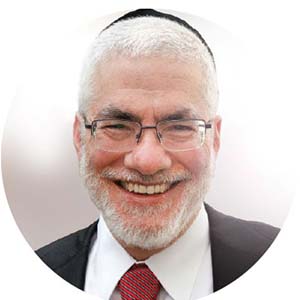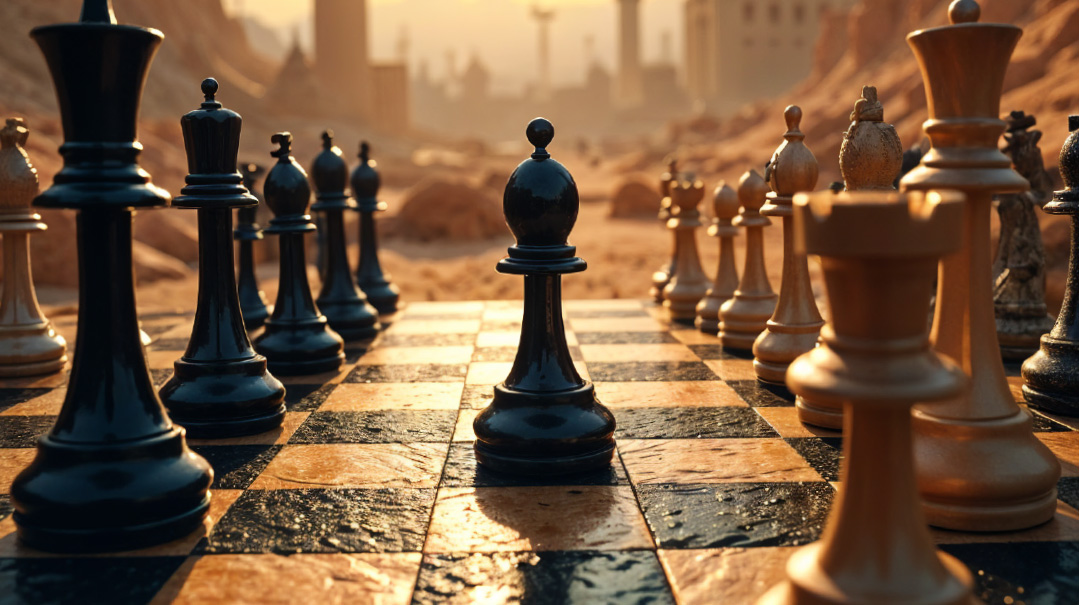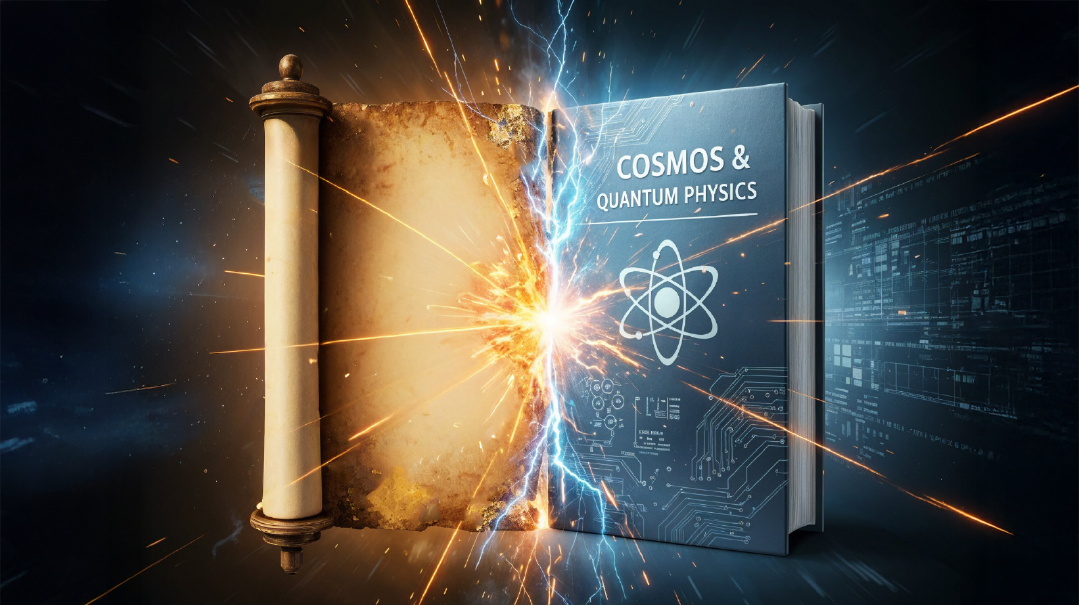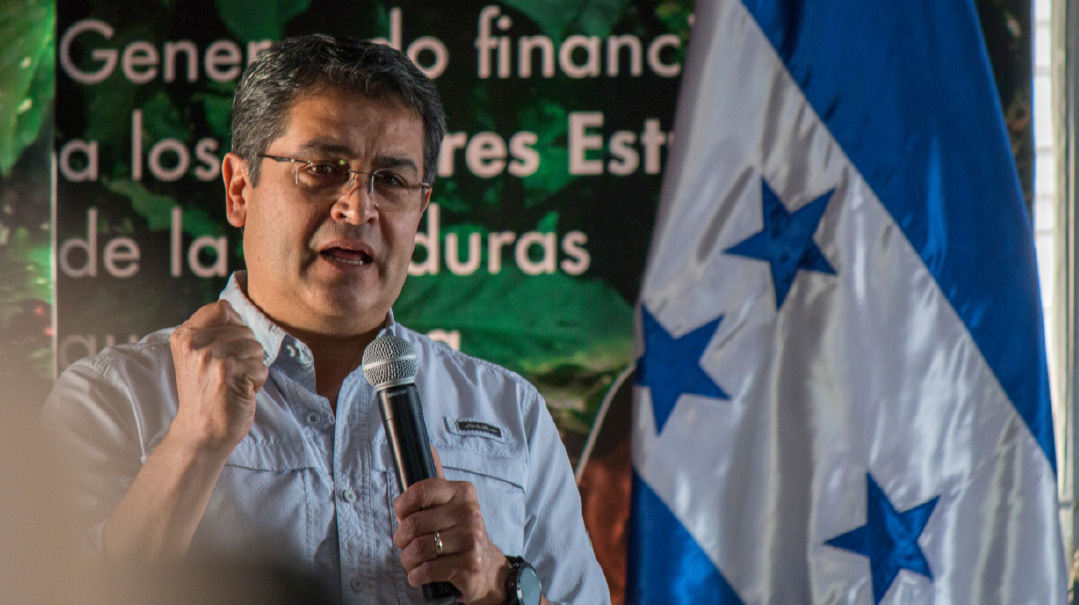Trump Resets the Chessboard

Two unstated messages of President Trump’s musings must have been music to Israeli ears

“WE
don’t know what Donald Trump is thinking, and neither does anyone else who is writing about his Gaza musings today,” writes Danielle Pletka of the American Enterprise Institute.
Even Prime Minister Binyamin Netanyahu looked completely taken aback when Trump started outlining his ideas for the future of Gaza at their joint press conference.
I’d go one step further than Pletka and venture that even Trump himself has no clear idea of where he is heading or how to get there.
But that does not mean that his extended comments on the future of Gaza and its current residents last week were not highly significant. As Pletka put it, “We do know that Donald Trump in his first term upended the region, and forged the first meaningful peace between Jews and Arabs in decades. And he did it by ignoring the conventional wisdom, and the experts and the think tanks, and the diplomats, and the peace processors....” No matter what, she concluded, he has “shone a light on the bankruptcy of what has passed for Gaza policy until now.”
To understand that bankruptcy, let us contemplate where we are today. After the release of 33 hostages, both living and dead, in the first stage of the ceasefire agreement, Israel and Hamas are supposed to enter into a second stage of negotiations, culminating in Israel’s withdrawal from the entirety of the Gaza Strip, including the vital Philadelphi Corridor and a buffer zone in the northern part of the Strip adjacent to Israel.
While those negotiations are ongoing, Israel is supposed to permit massive quantities of “humanitarian aid” to enter Gaza, including materials for rebuilding of the type that Hamas has consistently diverted over the past 17 years for the construction of its vast tunnel network.
It is well-nigh impossible, however, to imagine how those negotiations will meet Israel’s demand that Hamas be fully removed from power — a demand upon which Netanyahu has staked his political future. That means that at some point, fighting resumes, with more Israeli soldiers killed in combat, more Palestinian casualties, and most of the remaining 60 or so hostages still in captivity. What, one wonders, could the IDF do more than it already has to cause Hamas to hold up its hands in surrender and evacuate Gaza completely?
In short, we are doomed to a recurrent cycle of the destruction — Hamas attacks Israel, Israel razes vast areas of Gaza, in an attempt to reach Hamas, which is embedded in and under the civilian population, followed by large-scale international aid to rebuild what has been destroyed, much of which will be diverted by Hamas for its nefarious purposes, until Hamas initiates the next round of warfare.
YET IF WE DECONSTRUCT Trump’s remarks to ascertain the messages he is conveying to the various players — Hamas, the Gazans, the Gulf States, Israel, etc. — it is clear that he is determined to break that cycle of death and destruction.
Though he couched his language in sympathy for residents of Gaza, Trump made clear that Gaza will not be rebuilt for them, and that this time, there will be long-term costs for rolling the dice of war. All that the repeated rebuilding has done, writes Lee Smith, was to turn the Palestinians into a “tribe of feral children whose identity has been carved out of their relentless vow to eliminate Israel and slaughter Jews en masse — despite repeated failures, each more crushing than the last.”
Enough, said Trump. The Gaza Strip “has been a symbol of death and destruction for so many decades,” the president averred. “It should not go through a process of rebuilding” by the same people “who have lived there and died there and lived a miserable existence there.” Instead, he envisioned Gaza’s 1.7 million residents living in “new cities that will be built for them elsewhere by neighboring countries of great wealth.”
None of those wealthy neighbors rushed forward to volunteer their services. But they could. Gen. Giora Eiland, Israel’s former national security advisor and one of its most out-of-the-box thinkers on the Palestinian-Israel conflict, points out that the Sinai Desert is 169 times the size of Gaza, with one-third the population. Eiland has long pushed for solutions that look beyond carving up the narrow strip of land between the Mediterranean and the Jordan River and that assume that a Palestinian state must consist of the West Bank and Gaza together, despite their lack of physical congruity. Trump, in his view, was rejecting both of those long-held assumptions.
The loss of sovereignty and relocation have long been among the consequences of launching and losing wars, according to famed historian and Churchill biographer Anthony Roberts. In 1899, for instance, the South African Boers invaded the two adjacent British colonies, and were defeated. As a consequence, the Transvaal and Orange Free State, which had been ruled by the Boers, were annexed to the British colonies.
The leader of the Sudeten ethnic Germans invited Hitler to invade in 1938. After the war, three million Sudetenland ethnic Germans were removed from areas in Czechoslovakia where they had lived for centuries, with only the possessions they could carry on their backs. Yet today, their descendants are some of the most successful people in Germany.
Since the end of World War II, Roberts summarizes, over 20 ethnic groups, millions of people altogether, have been forced to relocate, including 800,000 Jews from Arab lands. They all sought to make the best of their situation, and eventually succeeded. With one exception: the Palestinians. They alone are still classified as refugees, over 75 years after the 1948 War, and have an entire UN apparatus, UNRWA, devoted to their care. And largely because they insist on refighting the war they launched on Israel in 1948, rather than accept the UN Partition Plan.
Trump made clear that he is fully in sync with Netanyahu that Hamas must have no role in Gaza’s future. If all Gaza’s residents are relocated during the 15 years or so that US national security advisor Mike Waltz estimated will be necessary to clear the rubble from Gaza and remove all the unexploded ordnance, there will be no one over whom Hamas can rule. And as Chazal tell us in a different context, ein melech b’lo am — there is no king without a nation.
By describing Gazans living in newly built cities and different places, Trump was subtly telling them that they must start over and rethink their sole focus on the destruction of Israel. Danielle Pletka, for one, doesn’t think Trump will succeed in relocating all Gaza’s residents. But he is letting the world know that Gaza can only be rebuilt under new management. For as things stand now, there is no hope for it. “When you impoverish people, teach them hatred for decades, give them the tools of destruction, radicalize them, they are beyond reach.... Gaza is destined to be a terrorist beachhead.”
At the same time, Trump wants the Gazans to know that there is a different course open to them. Might that not be the unstated message of his vision of Gaza rebuilt as a magnificent resort — Gaz-a-Lago? There is a path toward better lives for you and your descendants. Gaza is “a land with much natural beauty and potential, and recently discovered offshore natural gas,” writes Haviv Rettig Gur. Prior to October 7, its GNP per capita was higher than that of Morocco.
But the only thing Hamas has ever built was its underground system of tunnels, with the purpose of forcing Israel to cut through and destroy cities to get to them in time of war.
TWO UNSTATED MESSAGES of President Trump’s musings must have been music to Israeli ears. His discussion of a large role for the US in an eventual reconstruction of Gaza made clear that he recognizes that the US has a vital role to play in pacifying Gaza. (So expansive was Trump’s description of the American role that press secretary Karoline Leavitt had to clarify the next day that the president was not committing American “boots on the ground.”)
As an example of the crucial American role, Israel cannot contemplate withdrawal from the Philadelphi Corridor unless there is some other force willing and able to ensure that Hamas does not resume smuggling in arms through underground tunnels. Sadly, the only realistic alternative to Israeli troops are Americans. Ditto with respect to the inspection of building materials being brought into Gaza.
And most important of all, with his plan to move 1.7 million Gazans out of the Strip — and regardless of whether that ever happens — “President Donald Trump single-handedly collapsed the most destructive idea of the last hundred years — Palestine,” writes Lee Smith in Tablet, “[and] broke the long spell that had captured generations of world leaders, peace activists, and Middle East terror masters alike, who have come to regard the repeated failure and haunting secondary consequences of the idea of joint Arab Muslim and Jewish statehood in the same small piece of land as proof of its necessity.”
Cheers to President Trump for once again upsetting the apple cart.
(Originally featured in Mishpacha, Issue 1049. Yonoson Rosenblum may be contacted directly at rosenblum@mishpacha.com)
Oops! We could not locate your form.







